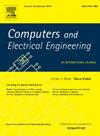LbPV: Lattice-based Privacy-preserving mutual authentication scheme for VANET
IF 4
3区 计算机科学
Q1 COMPUTER SCIENCE, HARDWARE & ARCHITECTURE
引用次数: 0
Abstract
This study addresses the critical challenge of achieving reliable message exchange among vehicles in Vehicular Ad-hoc Networks (VANETs). It is crucial to quickly share safety messages, traffic updates, available services, and road conditions among vehicles in VANETs. For security reasons, messages must originate exclusively from authenticated vehicles, ensuring secure message exchange and data privacy. Numerous schemes for privacy-preserving authentication have been proposed, yet they suffer from constant service provider involvement and the requirement for vehicles to generate parameters on the fly. To address these challenges, this paper introduces LbPV, a secure lattice-based privacy-preserving mutual authentication scheme emphasizing the reliability of messages, preventing spoofing and unauthorized access. LbPV eliminates service provider monitoring and allows vehicles to authenticate messages without generating parameters while on the move. This is achieved by exchanging a confidential token using lattice-based encryption and message signing. By verifying the signed message and using the shared token, receiving vehicles can confirm the authenticity of the messages. By using lattice-based cryptography, the proposed protocol is also designed with the potential to resist future attacks, including quantum attacks, enhancing its long-term security viability. The security analysis of LbPV includes formal and informal evaluations that demonstrate its robustness. Performance evaluations using the NTL library show that LbPV, with service provider parameters, outperforms existing approaches in the literature. Results of performance analysis indicate that when compared to the most efficient traditional non-lattice-based scheme discussed in this paper, the proposed protocol has increased computation cost, communication cost, and power consumption by 77.71%, 98.58%, and 77.71%, respectively. Conversely, when compared to the most efficient lattice-based scheme discussed in this paper, the proposed scheme demonstrates reductions in computation cost, communication cost, and power consumption by 71.95%, 2.16%, and 71.95%, respectively.

LbPV:基于网格的 VANET 隐私保护相互认证方案
本研究探讨了在车载 Ad-hoc 网络 (VANET) 中实现车辆间可靠信息交换的关键挑战。在 VANET 中,车辆之间快速共享安全信息、交通更新、可用服务和路况至关重要。出于安全考虑,信息必须仅来自经过认证的车辆,以确保信息交换安全和数据隐私。目前已经提出了许多保护隐私的认证方案,但这些方案都存在服务提供商不断参与和车辆需要即时生成参数的问题。为了应对这些挑战,本文介绍了 LbPV,这是一种基于网格的安全隐私保护相互验证方案,强调信息的可靠性,防止欺骗和未经授权的访问。LbPV 消除了服务提供商的监控,允许车辆在移动过程中验证信息而无需生成参数。这是通过使用基于网格的加密和信息签名交换保密令牌来实现的。通过验证签名信息和使用共享令牌,接收车辆可以确认信息的真实性。通过使用基于网格的加密技术,所提出的协议还具有抵御未来攻击(包括量子攻击)的潜力,从而增强了其长期安全性。LbPV 的安全性分析包括正式和非正式评估,以证明其稳健性。使用 NTL 库进行的性能评估表明,LbPV 在带有服务提供商参数的情况下,性能优于文献中的现有方法。性能分析结果表明,与本文讨论的最有效的传统非网格方案相比,所提出的协议在计算成本、通信成本和功耗方面分别增加了 77.71%、98.58% 和 77.71%。相反,与本文讨论的最有效的基于网格的方案相比,拟议方案的计算成本、通信成本和功耗分别降低了 71.95%、2.16% 和 71.95%。
本文章由计算机程序翻译,如有差异,请以英文原文为准。
求助全文
约1分钟内获得全文
求助全文
来源期刊

Computers & Electrical Engineering
工程技术-工程:电子与电气
CiteScore
9.20
自引率
7.00%
发文量
661
审稿时长
47 days
期刊介绍:
The impact of computers has nowhere been more revolutionary than in electrical engineering. The design, analysis, and operation of electrical and electronic systems are now dominated by computers, a transformation that has been motivated by the natural ease of interface between computers and electrical systems, and the promise of spectacular improvements in speed and efficiency.
Published since 1973, Computers & Electrical Engineering provides rapid publication of topical research into the integration of computer technology and computational techniques with electrical and electronic systems. The journal publishes papers featuring novel implementations of computers and computational techniques in areas like signal and image processing, high-performance computing, parallel processing, and communications. Special attention will be paid to papers describing innovative architectures, algorithms, and software tools.
 求助内容:
求助内容: 应助结果提醒方式:
应助结果提醒方式:


